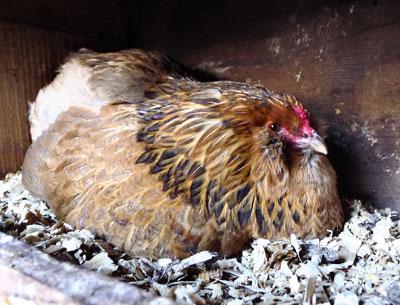Seasons by the Sea: The Stuff of Life

Eggs are delicious. Eggs are boring. Eggs are a perfect little package of protein. Eggs can be dangerous. Eggs are good for you. No, they’re bad for you. All of these things are true. Eggs are confusing!
As a cook and someone interested in nutrition, I believe in the sunny side of eggs. As a pastry chef, I constantly marvel at the egg’s ability to be transformed into a light and airy souffle or meringue or a rich custard or ice cream. They are simple; they are complicated.
Years ago I worked for a labor-intensive cooking school called Peter Kump’s. One lesson was eggs. After an hour lecture, we proceeded to cook, for six hours, various egg preparations such as omelettes, oeufs en meurette, and souffles. After class I never wanted to taste another egg in any way, shape, or form. Oddly, the next day I woke up craving eggs, and went about my egg homework.
Egyptian and Chinese records show that wild fowl were laying eggs for man in 1400 B.C. Europe has had domesticated hens since 600 B.C. It is believed that Columbus, on his second trip to the New World in 1493, brought the first chickens related to those now in egg production. These chickens originated in Asia. There are almost 200 breeds and varieties of chickens but only a few economically important as egg producers. Most laying hens in the United States are single-comb white leghorns.
There are approximately 280 million laying birds in the U.S., each laying 250 to 300 eggs per year. According to incredibleegg.org, the Web site of the American Egg Board, the U.S. produces about 75 billion eggs per year, about 10 percent of the world’s supply. The site says 60 percent are used by consumers, about 9 percent by the food service industry, and the rest to make egg products like mayonnaise.
For a while in the 1970s and ’80s eggs were demonized for their cholesterol content and egg consumption dropped. But in 2000 the American Heart Association revised its dietary guidelines for healthy adults, saying one a day is okay. The New York Times assures us that this is true, except for those with diabetes. The Mayo Clinic has found that consuming four egg yolks a week has not been found to increase the risk of heart disease. Now, people on low-fat diets can eat one or two a day without measurable changes in their blood cholesterol levels. Saturated fat in the diet, not dietary cholesterol, is what influences blood cholesterol levels the most.
As Harold McGee says in “On Food and Cooking: The Science and Lore of the Kitchen,” “neither familiarity nor fear should obscure eggs’ great versatility. Their contents are primal, the unstructured stuff of life. This is why they are protean, why the cook can use them to generate such a great variety of structure.” Eggs can reconcile oil and water into a smooth sauce. They refine the texture of candies and ice creams. They give flavor, substance, and nutritiousness to soups, drinks, breads, pastas, and cakes. On their own, they’re amenable to being boiled, fried, deep-fried, baked, roasted, pickled, and fermented.
A large, shelled egg weighs about two ounces. The white is mostly water; the yolk contains most of the protein and other vitamins. The best way to store eggs is under refrigeration, in a still location, not on the door of your refrigerator. If you are concerned about salmonella, you should be sure to cook eggs to 140 degrees for five minutes, or 160 degrees for one minute. You can also find pasteurized eggs and egg products at most grocery stores.
What is the best way to hard boil an egg? Don’t boil it; simmer it gently. Want to avoid that weird gray-green coating around the yolk of hard-boiled eggs? Cook them gently at the recommended cooking time, then plunge into cold water. Have you forgotten which eggs you boiled and which are still raw? Do the spin test. The cooked egg will spin nicely; the raw egg will wobble from the liquid inside.
The French have always been the most genius at finding versatile methods of egg cookery. Floating Island is a marvelous but fairly obsolete dessert that demonstrates what each component is capable of. The whites are whipped up into a frothy sweet lightness, then poached. The yolks are turned into a rich, vanilla-scented sauce upon which the little islands of meringue can float. The souffle, another French creation, is a tricky but doable concoction if you understand a little of the science to it. Mr. McGee explained it in his book: J.A.C. Charles, a French scientist and balloonist, discovered inflated air in a confined space would expand when heated. Much like a balloon expands when the air inside of it is heated, a souffle will grow up and out of its dish when the air bubbles in the egg are heated in the oven.
Did you know that you can put a deflated and cooled souffle back into the oven and it will rise again? Not quite as dramatically, but nonetheless. . . .
One of the beauties of living where we do is we all have access to farm-raised, organic eggs produced by happy hens. You should do a taste and color test of your own. If you are willing to pay the price (still cheap), you will find there is a great deal of difference in flavor and freshness.
Go buy some eggs and play around with them. Try mastering a simple omelette or tackle some oeufs en meurette. To quote Mr. McGee once again: “The egg does embody the chain of creation, from the developing chick back through the hen to the plants that fed her, and then to the ultimate source of life’s fire, the yellow sphere of the sky. An egg is the sun’s light refracted into life.” The incredible, edible egg.
Click for recipes
